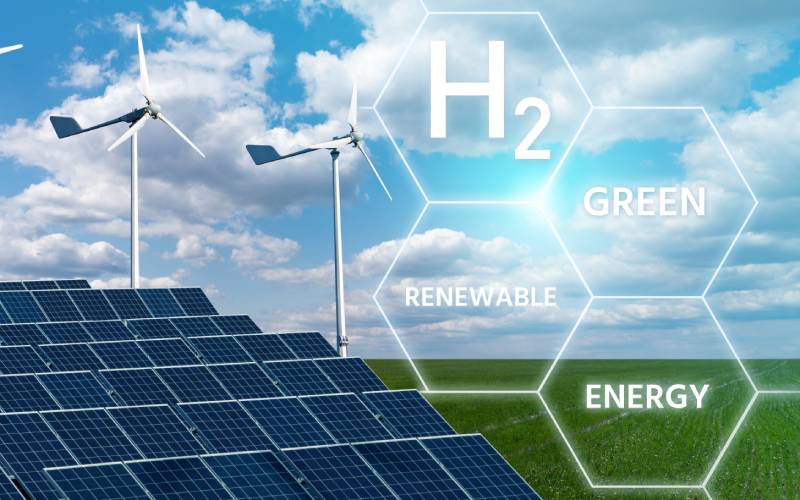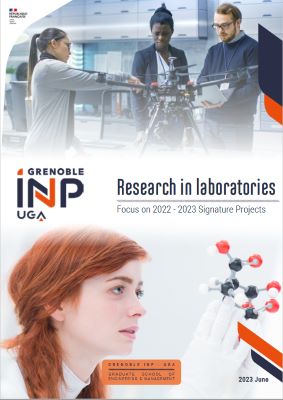
The growth of renewable energies such as wind and solar power, which are intermittent by nature, is increasingly complexifying how electricity networks are managed. Producing hydrogen through water electrolysis is an efficient way of using the surplus electricity from renewable energy sources. The hydrogen produced can either be converted back into electricity during periods of high demand, or injected into the natural gas network and/or used as a chemical reagent (reducing agent).
Alkaline electrolysis is the most widely used process on an industrial scale, as opposed to acid electrolysis, which requires the use of rare metals such as platinum and iridium oxide. As well as being particularly expensive, the availability of these materials is problematic.
"At present, 7-8 tonnes of iridium are mined every year, and known reserves are 800 (hypothetically 3,000) tonnes," says Marian Chatenet, a researcher at LEPMI.
"But to reach the targets set in France 2030, we would need to devote around 15% of the world's production to the country, which is unfeasible. Alternatives must be found."
Nickel-based alloys as an alternative
This is the background to the researcher's work recently published in the prestigious journal Nature Materials. 15 years ago, Marian Chatenet chanced upon the discovery that steel could replace iridium oxide as a catalyst for the alkaline electrolysis of water (or at least the oxygen-release reaction, the most difficult part of water electrolysis). In late 2019, he joined forces with SIMaP researcher Valérie Parry to understand the link between the catalytic properties and the composition of several industrial alloys based on iron, nickel and chromium (stainless steel, incoloy, inconel, etc.).
"Although the catalytic activity of these compositions is not optimal at the beginning, after a certain period of time an active layer of oxides forms on the surface, which is very effective at releasing oxygen in alkaline environments." It also appears that the composition of the final active layer depends essentially on the Fe and Ni content of the starting alloy. (This is the ratio that determines the activity of the oxygen release reaction.) The LEPMI team has also developed a protocol to speed up the oxide layer's development and stabilisation to just a few hours.
Again in collaboration with Valérie Parry from the SIMaP laboratory, the researchers also tested the influence of how the alloy is shaped (by drawing or rolling, for example) and its surface condition on its catalytic activity.
"Whether in terms of the cost of the raw materials or the ease with which the material can be produced and shaped, iron-nickel-chromium alloys are proving far more attractive than iridium oxide." Industrialisation, as well as solving the problem of the materials' availability, will help reduce the cost of the electrolyser by almost a third.
"And it recycles easily, too!"
Now that the proof of concept has been demonstrated, all that remains is the downstream engineering. As part of the Hydrogène research programme, the DAEMONHYC project aims to develop anionic membrane electrolysers without noble metals by optimising the selection of materials and how they are shaped to support the development of water electrolysis on a large scale. Iron-nickel-chromium alloys form the basis of this research. Watch this space!




 The growth of renewable energies such as wind and solar power, which are intermittent by nature, is increasingly complexifying how electricity networks are managed. Producing hydrogen through water electrolysis is an efficient way of using the surplus electricity from renewable energy sources. The hydrogen produced can either be converted back into electricity during periods of high demand, or injected into the natural gas network and/or used as a chemical reagent (reducing agent).
The growth of renewable energies such as wind and solar power, which are intermittent by nature, is increasingly complexifying how electricity networks are managed. Producing hydrogen through water electrolysis is an efficient way of using the surplus electricity from renewable energy sources. The hydrogen produced can either be converted back into electricity during periods of high demand, or injected into the natural gas network and/or used as a chemical reagent (reducing agent).